Finding the right words to express ourselves warmly and thoughtfully can make a big difference in how our message is received. The word “furthermore” is often used to add information or ideas in a sentence, but sometimes it can sound too formal or distant. If you’re looking for other ways to say “furthermore” that feel more personal, friendly, and engaging, this article will help you find the perfect fit. With these alternatives, you can communicate your thoughts with clarity, warmth, and professionalism, depending on your tone and situation.
What Does “Furthermore” Mean?
The word “furthermore” means “in addition to what has already been said” or “also.” It’s often used when you want to add more information that supports your previous point. For example:
- “The meeting was productive; furthermore, everyone agreed on the next steps.”
It connects ideas smoothly, but in everyday conversation, it may sound a bit formal. Using more natural alternatives can make your writing or speech feel more genuine and relatable.
Is It Professional/Polite to Say “Furthermore”?
Yes, saying “furthermore” is both professional and polite, especially in formal writing like reports, essays, and business emails. However, it may sound too stiff or academic in casual or friendly communication.
If you’re talking to a friend, writing a social media caption, or sending a kind message, using alternatives like “also,” “besides,” or “what’s more” might sound more natural and caring. Choosing the right tone shows emotional intelligence and helps your words feel more personal.
Synonyms For “Furthermore”
- Moreover
- In addition
- What’s more
- Besides
- Additionally
- Also
- On top of that
- Not to mention
- To add to that
- Likewise
- Plus
- In the same way
- As well as that
- On a related note
- By the same token
- What’s even better
- Equally
- In the same breath
- Beyond that
- To top it off
1. Moreover
Meaning: “Moreover” is used to add an extra point or piece of information that strengthens your previous statement. It sounds formal but is softer than “furthermore.”
Scenario: When writing a professional email or an academic piece, this is a great replacement for “furthermore.”
Examples:
- The company achieved its goals this year; moreover, it expanded into new markets.
- She is talented; moreover, she’s incredibly hardworking.
- The plan is simple; moreover, it’s cost-effective.
- He’s not just a teacher; moreover, he’s a mentor to his students.
- The city is beautiful; moreover, it’s filled with friendly people.
Tone: Professional, formal, informative.
Explanation: “Moreover” shows a smooth, polished way to add emphasis or another point without sounding too heavy. It’s perfect for academic, business, or formal writing where you want your ideas to flow logically.
2. In Addition
Meaning: This phrase is used when you want to include another piece of information that adds value or context to your main point.
Scenario: Use this in reports, polite conversations, or professional discussions when you want to highlight extra details.
Examples:
- The service was excellent; in addition, the staff was very friendly.
- She completed her degree; in addition, she received a scholarship for her research.
- The car is affordable; in addition, it’s environmentally friendly.
- They hosted a charity event; in addition, they donated the profits.
- The movie is entertaining; in addition, it carries a strong message.
Tone: Neutral, polite, and respectful.
Explanation: “In addition” adds a sense of completeness to your ideas. It’s clear, versatile, and can be used both formally and semi-formally.
3. What’s More
Meaning: This phrase means “and on top of that” or “even better,” and is great for conversational and engaging speech.
Scenario: Use this when you want to make your message sound friendly or emphasize something surprising or impressive.
Examples:
- The vacation was relaxing; what’s more, we got a free hotel upgrade.
- She’s kind and thoughtful; what’s more, she always helps others.
- The design looks great; what’s more, it’s easy to use.
- He’s reliable; what’s more, he always keeps his promises.
- The food was delicious; what’s more, the service was exceptional.
Tone: Warm, conversational, enthusiastic.
Explanation: “What’s more” helps your message sound more natural and heartfelt, especially when you’re trying to express excitement or appreciation.
4. Besides
Meaning: “Besides” means “apart from that” or “in addition,” often used to add another reason or supportive idea.
Scenario: Use this in both casual and professional contexts when giving multiple reasons for something.
Examples:
- It’s too late to go out; besides, it’s raining heavily.
- She didn’t join the team; besides, she had other commitments.
- The plan is risky; besides, it doesn’t offer much benefit.
- He’s too young; besides, he lacks experience.
- I don’t want dessert; besides, I’m already full.
Tone: Slightly casual, explanatory.
Explanation: “Besides” adds an easy-going yet logical transition between thoughts. It’s especially effective when explaining reasoning or emphasizing additional points.
5. Additionally
Meaning: “Additionally” means “as well as that” or “also,” and is used to present information in a clear and structured way.
Scenario: Best suited for formal writing, emails, and business communication where clarity and professionalism are key.
Examples:
- The company launched a new product; additionally, it improved customer service.
- The team met its targets; additionally, it achieved record profits.
- She’s an expert in marketing; additionally, she’s skilled in design.
- The course covers theory; additionally, it includes practical training.
- The new app saves time; additionally, it boosts productivity.
Tone: Professional, precise, and respectful.
Explanation: “Additionally” works perfectly when you want to sound organized and logical. It helps your writing maintain a smooth flow of ideas without being repetitive.
6. Also
Meaning: The word “also” is one of the simplest and most common ways to add information or continue a thought naturally.
Scenario: It’s perfect for both formal and casual use — from essays and business writing to friendly conversations.
Examples:
- She loves painting; also, she enjoys photography.
- The event was fun; also, everyone learned something new.
- He is honest; also, he’s a great listener.
- The package includes free delivery; also, it comes with a warranty.
- She speaks English fluently; also, she understands French.
Tone: Neutral, friendly, and versatile.
Explanation: “Also” is clear and flexible, allowing you to connect ideas smoothly without sounding too formal. It’s one of the most balanced alternatives to “furthermore.”
7. On Top of That
Meaning: This phrase adds another interesting or positive point, often used to emphasize something impressive or unexpected.
Scenario: Ideal for casual writing or friendly speech when you want your message to sound expressive and engaging.
Examples:
- The view was breathtaking; on top of that, the weather was perfect.
- He’s hardworking; on top of that, he’s always willing to help others.
- The meal was affordable; on top of that, it tasted amazing.
- She’s beautiful; on top of that, she’s incredibly humble.
- We finished early; on top of that, we received praise from the client.
Tone: Warm, enthusiastic, friendly.
Explanation: “On top of that” is conversational and adds a cheerful tone to your sentences, making your speech sound more human and heartfelt.
8. Not to Mention
Meaning: Used to bring up an additional fact or advantage that strengthens your previous point, often something impressive or worth highlighting.
Scenario: Perfect for casual speech, persuasive writing, or storytelling.
Examples:
- The hotel was luxurious; not to mention, it offered free spa access.
- He’s kind and caring; not to mention, very patient with everyone.
- The team worked hard; not to mention, they completed the project early.
- She’s talented; not to mention, she’s always improving her skills.
- The product is affordable; not to mention, it’s environmentally friendly.
Tone: Engaging, appreciative, slightly informal.
Explanation: “Not to mention” makes your message sound confident and thoughtful, helping your audience feel the strength of your points without sounding repetitive.
9. To Add To That
Meaning: This phrase introduces another point that builds on what was previously said.
Scenario: Suitable for both formal and casual situations, especially when you want to extend your reasoning.
Examples:
- The project improved efficiency; to add to that, it reduced costs significantly.
- She’s a great manager; to add to that, her team adores her.
- The presentation was engaging; to add to that, the visuals were beautiful.
- He’s dependable; to add to that, he’s always punctual.
- The app is easy to use; to add to that, it’s regularly updated.
Tone: Balanced, thoughtful, and clear.
Explanation: “To add to that” keeps your tone polite and flowing, especially when transitioning from one idea to another in a natural way.
10. Likewise
Meaning: “Likewise” means “in the same way” or “similarly,” used to connect ideas that share a similar meaning.
Scenario: Excellent for formal writing, professional conversations, and even polite responses.
Examples:
- The first plan was effective; likewise, the second one worked perfectly.
- She values honesty; likewise, she expects it from others.
- The product performed well; likewise, the support team impressed us.
- He respects his colleagues; likewise, they respect him.
- The old method worked; likewise, the new one shows promise.
Tone: Professional, respectful, and calm.
Explanation: “Likewise” adds sophistication to your writing and helps connect two similar ideas gracefully.
11. Plus
Meaning: A friendly, informal way to add another reason or detail.
Scenario: Ideal for casual speech, marketing, and friendly messages.
Examples:
- The park was clean; plus, it had free Wi-Fi.
- She’s funny; plus, everyone loves her energy.
- The movie was entertaining; plus, the soundtrack was fantastic.
- The service was quick; plus, the staff was cheerful.
- It’s close to the station; plus, rent is affordable.
Tone: Friendly, upbeat, conversational.
Explanation: “Plus” adds a touch of positivity and flow to your writing, making your tone light and engaging.
12. In the Same Way
Meaning: Used to show that two statements or situations are similar in nature.
Scenario: Useful in essays, comparisons, or thoughtful discussions.
Examples:
- She helps others; in the same way, her brother volunteers too.
- The teacher inspired her students; in the same way, they inspired each other.
- The first project succeeded; in the same way, the second met expectations.
- He handled stress calmly; in the same way, his team followed his example.
- The company values teamwork; in the same way, employees support one another.
Tone: Reflective, professional, and harmonious.
Explanation: “In the same way” helps connect ideas meaningfully, showing thoughtful parallels between them.
13. As Well As That
Meaning: Means “in addition to that,” used to present another piece of relevant information.
Scenario: Great for professional writing or when making multiple points clearly.
Examples:
- She’s an excellent designer; as well as that, she’s a great leader.
- The trip was enjoyable; as well as that, it was educational.
- He speaks Spanish; as well as that, he writes it fluently.
- The new feature saves time; as well as that, it reduces errors.
- The project was completed early; as well as that, it stayed within budget.
Tone: Formal, composed, respectful.
Explanation: “As well as that” is polite and ideal for maintaining a professional or academic tone while smoothly connecting points.
14. On a Related Note
Meaning: Used when introducing a new but connected topic or idea.
Scenario: Perfect for speeches, conversations, or emails where you’re moving to a related subject.
Examples:
- We discussed marketing; on a related note, let’s talk about branding.
- The weather’s improving; on a related note, outdoor events are increasing.
- The team met its goal; on a related note, morale has never been higher.
- The book was inspiring; on a related note, the author is hosting a workshop.
- We finished the report; on a related note, let’s plan the next meeting.
Tone: Smooth, conversational, and professional.
Explanation: “On a related note” helps you transition naturally, making your communication feel organized and thoughtful.
15. By the Same Token
Meaning: Means “for the same reason” or “similarly,” often used to show agreement or balance in ideas.
Scenario: Excellent for analytical writing or debates where logical consistency is needed.
Examples:
- She supported the plan; by the same token, she understood its risks.
- He values honesty; by the same token, he expects it in return.
- The rule applies to everyone; by the same token, exceptions are rare.
- We worked hard; by the same token, we earned our success.
- The law protects consumers; by the same token, it holds businesses accountable.
Tone: Analytical, formal, reasoned.
Explanation: “By the same token” conveys fairness and logical connection, often used in thoughtful or persuasive writing.
16. What’s Even Better
Meaning: Highlights an additional point that’s more impressive or positive than the first.
Scenario: Ideal for positive, friendly, and persuasive tones.
Examples:
- The food was tasty; what’s even better, it was healthy too.
- The meeting went well; what’s even better, we secured the deal.
- The view was stunning; what’s even better, it changed beautifully at sunset.
- The plan worked; what’s even better, everyone enjoyed the process.
- The offer was fair; what’s even better, it included free shipping.
Tone: Enthusiastic, optimistic, expressive.
Explanation: “What’s even better” adds emotional appeal and helps your message feel uplifting and genuine.
17. Equally
Meaning: Used to emphasize that two or more things are the same in importance or value.
Scenario: Works best in formal writing or when comparing balanced ideas.
Examples:
- The product is affordable; equally, it’s high in quality.
- She’s confident; equally, she’s humble.
- The team is talented; equally, they’re hardworking.
- He’s intelligent; equally, he’s compassionate.
- The city is busy; equally, it’s welcoming.
Tone: Balanced, polite, and professional.
Explanation: “Equally” conveys harmony and fairness, helping your sentences sound elegant and well-structured.
18. In the Same Breath
Meaning: Used to mention two things together, often showing connection or contrast.
Scenario: Best for storytelling, essays, or thoughtful writing.
Examples:
- She spoke of kindness; in the same breath, she criticized others.
- He praised the plan; in the same breath, he doubted its success.
- The manager supported the idea; in the same breath, he raised concerns.
- They admired her courage; in the same breath, they feared her honesty.
- He promised support; in the same breath, he hesitated to act.
Tone: Reflective, nuanced, slightly serious.
Explanation: “In the same breath” adds emotional or reflective depth, showing subtle contrast between ideas.
19. Beyond That
Meaning: Used to express something additional or to go further than what has been discussed.
Scenario: Great for expanding ideas in writing or speeches.
Examples:
- The training was helpful; beyond that, it built confidence.
- She’s skilled; beyond that, she’s an inspiring leader.
- The movie was entertaining; beyond that, it was thought-provoking.
- The new law protects workers; beyond that, it promotes equality.
- He’s successful; beyond that, he helps others succeed.
Tone: Deep, appreciative, positive.
Explanation: “Beyond that” gives your message a sense of depth, suggesting growth or additional meaning.
20. To Top It Off
Meaning: Used to add a final and often best point, especially when ending on a high note.
Scenario: Ideal for casual speech, storytelling, or expressing joy.
Examples:
- The food was amazing; to top it off, dessert was free.
- We had a great time; to top it off, the weather was perfect.
- She nailed her presentation; to top it off, she got promoted.
- The trip was wonderful; to top it off, we met old friends.
- He won the match; to top it off, he broke a record.
Tone: Joyful, cheerful, expressive.
Explanation: “To top it off” helps end a statement positively and memorably, leaving your message upbeat and engaging.
Conclusion
Finding other ways to say “furthermore” helps you express your ideas with variety, warmth, and intention. Whether you’re writing something formal or speaking casually, the words you choose shape how others feel about your message. Using these alternatives allows you to sound more natural, thoughtful, and emotionally intelligent — while keeping your tone respectful and human.
5 Unique FAQs
1. What can I say instead of “furthermore” in a friendly tone?
Try saying “what’s more,” “plus,” or “on top of that” for a natural, conversational touch.
2. What’s the most professional alternative to “furthermore”?
Use “moreover,” “additionally,” or “in addition” in business and academic writing.
3. Can I use “furthermore” in casual writing?
Yes, but it might sound too formal. Instead, choose softer options like “also” or “besides.”
4. Which alternatives make writing sound more emotional or warm?
Expressions like “what’s even better,” “on top of that,” or “not to mention” add friendliness and care.
5. How can I decide which synonym fits best?
Think about your tone — if it’s formal, go for “moreover”; if casual, use “plus” or “what’s more.”

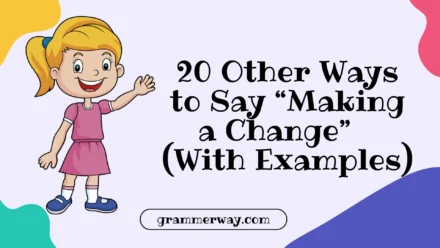
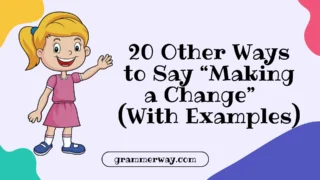

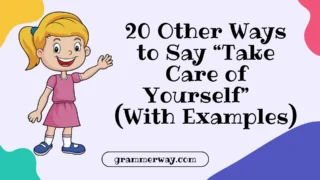
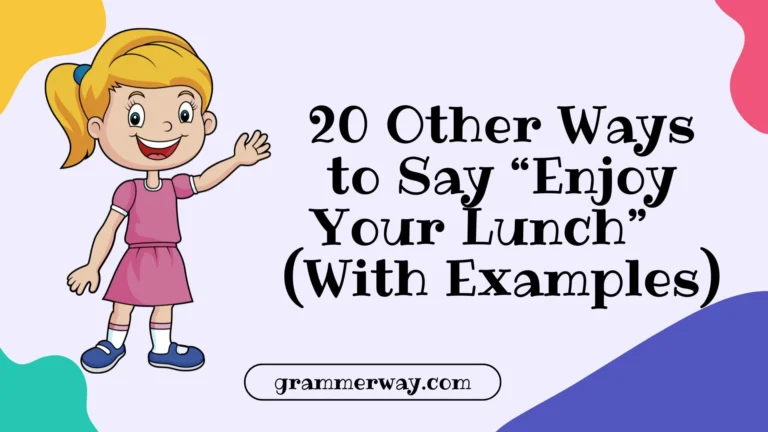
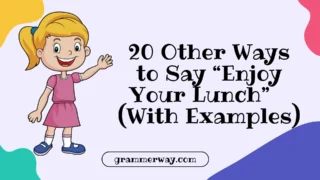
Leave a Comment